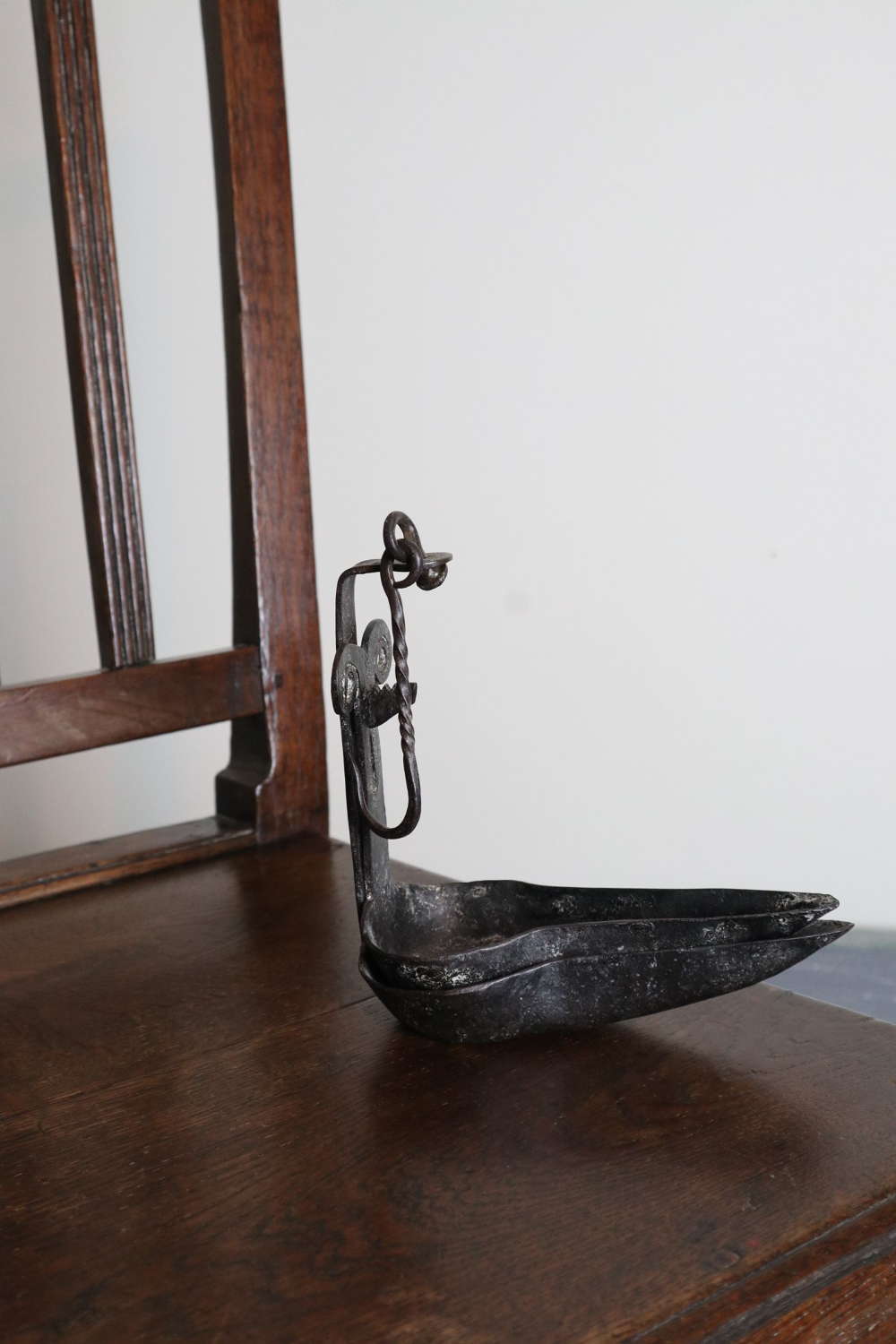
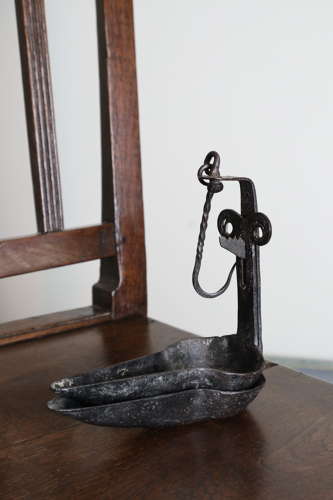
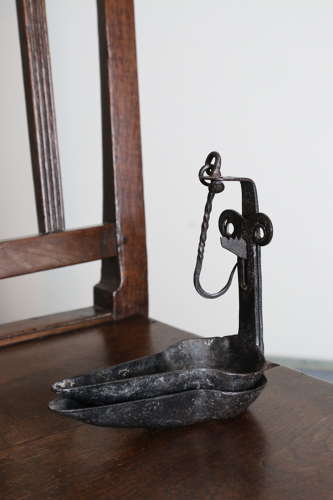
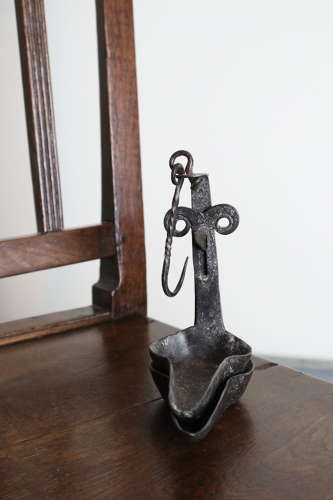
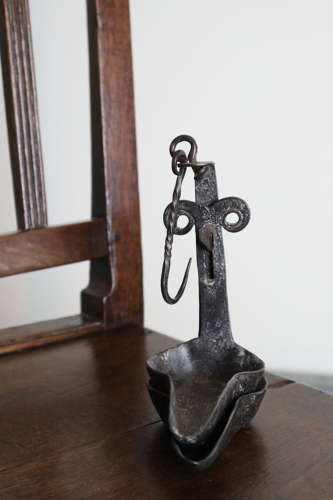
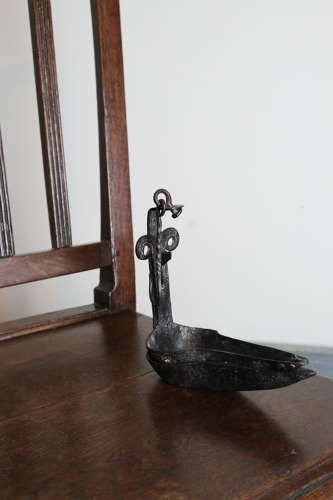
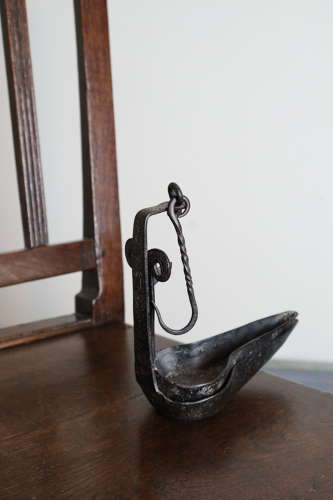
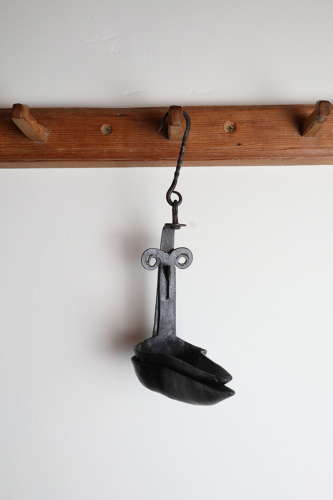
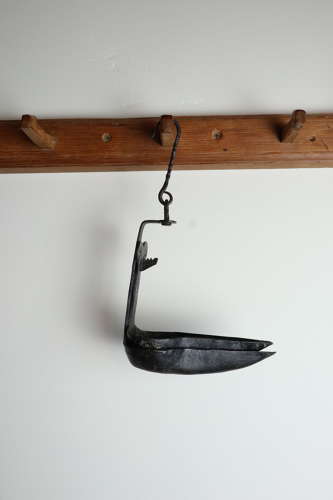
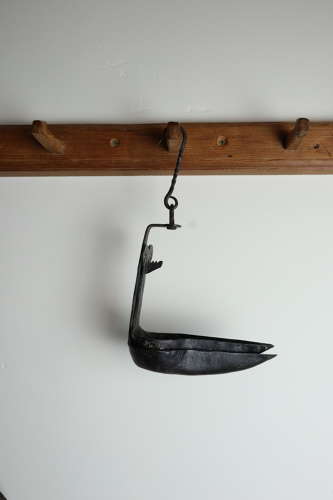
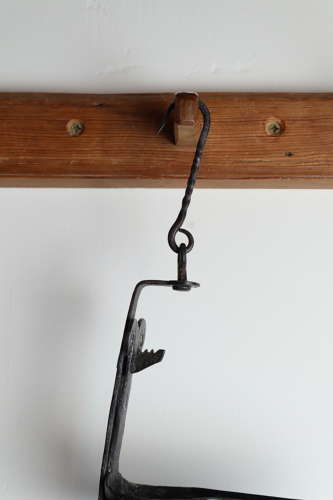
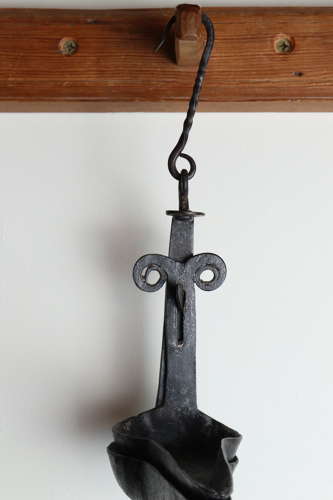
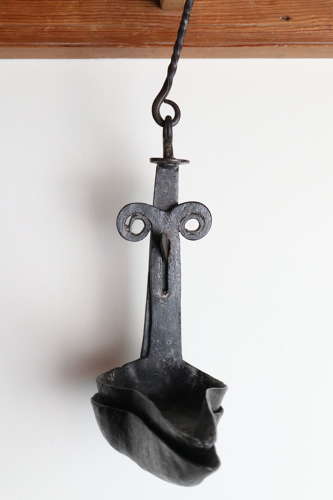
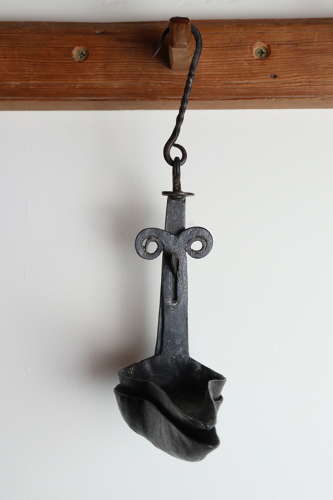
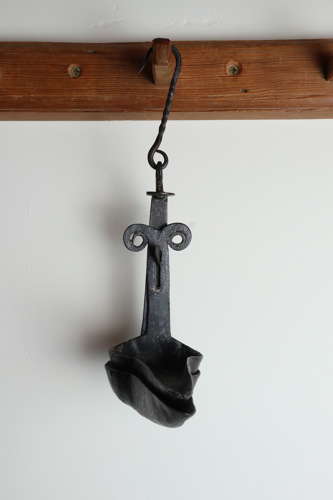
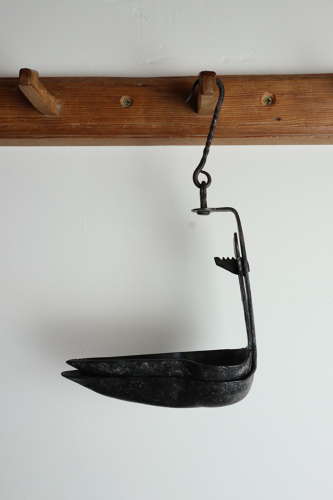
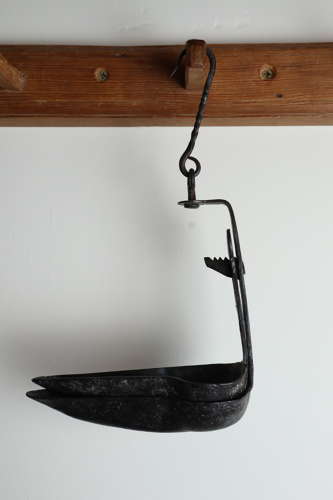
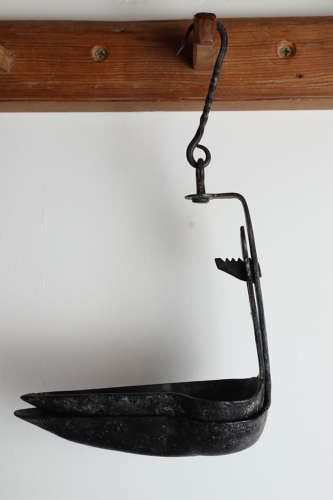
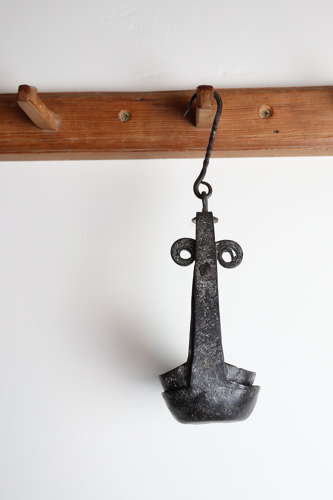
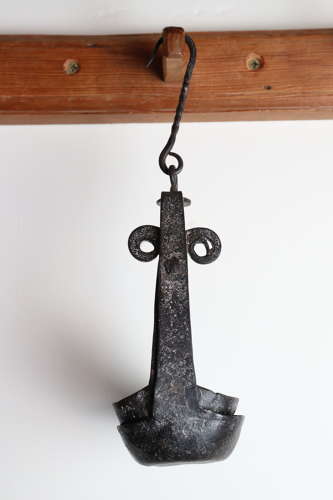
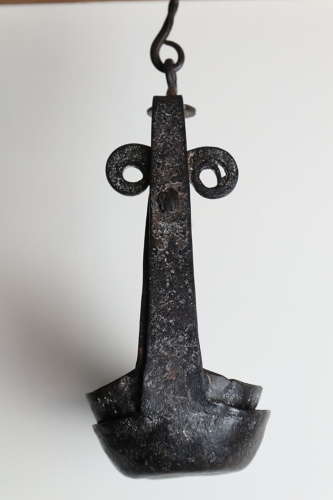
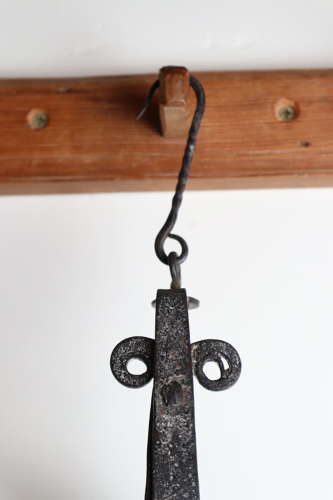
Code: 10432
Dimensions:
For sale is a charismatic and robust Scottish vernacular double-pan 'Cruisie' oil lamp from the first half of the 19th Century circa 1825-1850.
- In the 18th and 19th Century in the Highlands, coasts and Islands of Scotland lighting methods and the availability of fuels such as comparatively expensive candles was limited. This meant that adaptations of rush lighting and the use of oil from fish in coastal districts was commonplace. This was alongside the basic glow from the light of fires in open hearth dwellings/croft houses.
- This wrought iron, blacksmith made oil lamp or betty was handmade by hammering out a plate of iron to form into a mould. This was suspended from a wall, nail or beam to provide an adaptable and movable, additional source of light.
- The good size hanging oil lamp is handmade in wrought iron and swings from a decoratively twisted hanging hook down to a revolving attachment located at the top of the oil lamp bracket.
- The cruisie measures circa 27 cm from the hanger down to the lower oil lamp-pan which is around 16cm long and 7.5cm at the widest bowls section.
- Cruisie lamps vary a great deal in design and shape, dependent on the availability of iron and the purpose for which they were used.
- This design has a beautiful 'Rams Head' design to the smaller upper oil pan as shown in the images. The upper pan has a notched bracket with four notches.
- This is a standard approach with a double pan arrangement (which allowed them to catch the oil drips and not waste anything).
- Cruisie lamps consist of leaf-shaped vessels in which to hold the oil, into which a floating rush or appropriate wick was placed from the neck to act as a wick soaking up the oil to burn as a bright light source. In modern times people utilise tea-lights or olive oil into these cruisie lamps with an appropriate wick to reproduce soft/atmospheric lighting.
A very robustly built vernacular item with considerable charm from the Scotland ready for another 170+ years of utility.